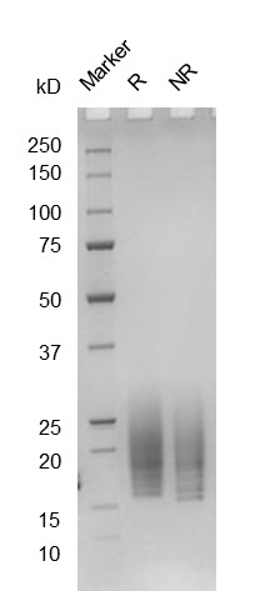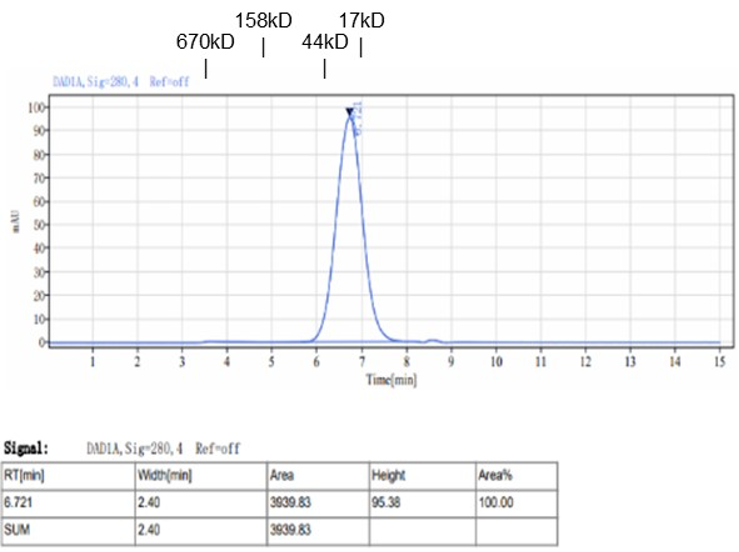hGM-CSF(18-144)-His
Description
Granulocyte-macrophage colony-stimulating factor (GM-CSF) is a cytokine that stimulates the growth and differentiation of hematopoietic precursor cells from various lineages, including granulocytes, macrophages, eosinophils and erythrocytes. It was initially characterized by its ability to induce colonies of granulocytes and macrophages from myeloid progenitor cells. GM‑CSF is produced by multiple cell types in response to cytokine or inflammatory stimuli, such as T cells, B cells, monocytes, mast cells, endothelial cells, fibroblasts, and adipocytes. On mature hematopoietic cells, it acts as a survival factor for granulocytes, monocytes/macrophages and eosinophils while activating their effector functions. GM‑CSF exerts its biological effects through a heterodimeric receptor complex composed of GMCSFRa/CD116 and the signal transducing common beta chain (CD131) which is also a component of high‑affinity receptors for IL3 and IL5. Additionally, it binds to a naturally occurring soluble form of GMCSFRa. GM‑CSF is part of the immune/inflammatory cascade, by which activation of a small number of macrophages can rapidly lead to an increase in their numbers, a process crucial for combating infection. It promotes Th1 biased immune response, angiogenesis, allergic inflammation, and the autoimmunity development. GM-CSF is also utilized as a medication to stimulate white blood cell production after chemotherapy, and GM‑CSF transfected tumor cells are employed as cancer vaccines. The human and murine molecules are species-specific with no cross-species reactivity.
Product name | hGM-CSF(18-144)-His |
Species | Homo sapiens |
Expression system | HEK293 |
Buffer | PBS, pH 7.4 |
Delivery condition | Dry ice (-80°C) |
Delivery Time | 1 week if in stock; 4 weeks if production needed |
Storage condition | Store at -80°C |
Brand | BioMetas |
Applications | Cancer Research, Cell Culture, Immune Checkpoint, Immune System, Immunotherapy, Inflammation Research, Stem Cells & Differentiation, Targeted Therapy, Wound Healing |
Aliases/Synonyms | GMCSF, CSF, CSF-2, CSF2, molgramostim, molgramostin, sargramostim, MGC131935, MGC138897, MGI-1GM, pluripoietin-a |
Reference | |
Note | For research use only. Not suitable for clinical or therapeutic use. |
Size | 1mg, 5mg, 10mg, 50mg, 100mg |
Brand | BioMetas |
Product type | Cytokine |
Expression system | HEK293 |
Applications | Cancer Research, Cell Culture, Immune Checkpoint, Immune System, Immunotherapy, Inflammation Research, Stem Cells & Differentiation, Targeted Therapy, Wound Healing |
Contact Us for a Quote!
Data Gallery
Fig. 1.) 4-20% SDS-PAGE analysis
Recombinant protein was visualized by Coomassie Brilliant Blue R250 staining.

Fig. 2.) SEC-HPLC analysis
Column: Superdex 200 Increase 5/150 GL
Running buffer: 2xPBS, pH 7.4
